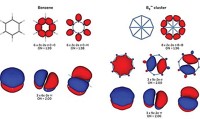Advertisement
Grab your lab coat. Let's get started
Welcome!
Welcome!
Create an account below to get 6 C&EN articles per month, receive newsletters and more - all free.
It seems this is your first time logging in online. Please enter the following information to continue.
As an ACS member you automatically get access to this site. All we need is few more details to create your reading experience.
Not you? Sign in with a different account.
Not you? Sign in with a different account.
ERROR 1
ERROR 1
ERROR 2
ERROR 2
ERROR 2
ERROR 2
ERROR 2
Password and Confirm password must match.
If you have an ACS member number, please enter it here so we can link this account to your membership. (optional)
ERROR 2
ACS values your privacy. By submitting your information, you are gaining access to C&EN and subscribing to our weekly newsletter. We use the information you provide to make your reading experience better, and we will never sell your data to third party members.
Physical Chemistry
Newscripts
Science Friction with Bob Wolke
by Science Friction with Bob Wolke
January 7, 2008
| A version of this story appeared in
Volume 86, Issue 1
I did a double (or triple) take the other day, when in short order I saw a Chevrolet Cobalt, a Dodge Neon, and a Saturn Ion. When did they start naming cars for chemical elements and entities? Would I some day see a Pontiac Praseodymium? A Volkswagen Zwitterion?
I wondered whether Saturn might christen one model of its Ion the Cation and another one the Anion. Probably not, because people would pronounce them to rhyme with nation and canyon, respectively. Only chemists, like some secret society, would know the proper pronunciations.
Automobile makers have had to come up with new model names almost every year for decades. Not counting the mysterious alphanumerics such as 626LX and GS300 (both of which I have owned), there have been some 400 named automobile models on the road, from Accent to Zephyr. The names are intended to appeal to people who wish to be perceived as adventurous (Explorer, Safari, Trailblazer, Voyager), aggressive (Barracuda, Cougar, Stingray), sophisticated (Regal, Continental, Parisienne, LeBaron), or just plain rich (Riviera, Estate Wagon, Park Avenue, Country Squire).
Personally, I wouldn't be caught dead driving a car with one of those trumped-up, nonword names, such as Acura, Alero, Allante, Altima, Camry, Catera, Elantra, Pantera, Sentra, or Vitara. If the Lord had wanted these to be words, he would have put them in the Unabridged Oxford English Dictionary.
Then there are what I call the stealth names, intended to evoke favorable images. Achieva, Integra, and Reliant are supposed to suggest achievement, integrity, and reliability. But the joke is on Plymouth, makers of the Reliant. Reliant is a real word, but it doesn't mean reliable or dependable; it means dependent.
Automotive journalists have also been fooled on occasion. When the Mustang appeared in 1964, a writer in a national magazine ridiculed Ford for depicting the horse in the logo as running "the wrong way," from right to left. Of course, a real mustang can run in any direction it pleases. But the writer's familiarity with horses was obviously limited to race tracks, where in the U.S. the horses run from left to right as viewed from the stands. In Australia, they run from right to left. And no, it's not because of the Coriolis effect.
I wondered why General Motors chose Cobalt and Neon to initiate what could be a series of a hundred-odd element names. Then I realized that in most other cases, the suffix -ium would sound too much like an affliction. ("I have a Dysprosium." "Oh, I'm so sorry.") And of course, nobody but a chemist can pronounce molybdenum.
Titanium, however, while not yet the name of a car as far as I know, is currently riding a wave of popularity. The metal's noncorroding, satiny gray appearance has been adopted as a fashionable new color by designers of everything from wristwatches to refrigerators. I have seen the BlackBerry Curve 8310 advertised as "available in titanium or red." Does that mean I can buy one made out of red?
Spurred by the prominence of titanium, I wondered how popular other element names might be, outside of the chemical world. So I searched Google for the names of several other metallic elements and recorded the numbers of page hits that do not contain the words element or metal.
(I know what you're thinking: Doesn't this guy have anything better to do? Get a life, Wolke!)
Anyway, here are a few of my results, in millions of Web pages: Au, 493; Ag, 289; Fe, 166; Cu, 74; Al, 53; Zn, 36; Ni, 29; and Mg, 13. Titanium comes in at 13 million, equal to magnesium. Not a bad showing for an only recently exploited metal, in spite of its being the ninth most abundant element in Earth's crust.
Titanium is not the most recently exploited element, however. You have undoubtedly seen Dow Chemical's advertising campaign featuring their fictional element Hu, billed as "The Human Element." And you have been wondering why the mock-periodic-table square in the ads shows an atomic number of 8. According to Dow, this represents "the most important element for life," i.e., oxygen. In the atomic weight position we see 7E+09, which is supposed to represent the world's population of 7 billion.
7,000,000,000O would be a rather heavy isotope, indeed.
Bob Wolke can be reached at sciencefriction.wolke@gmail.com.




Join the conversation
Contact the reporter
Submit a Letter to the Editor for publication
Engage with us on Twitter